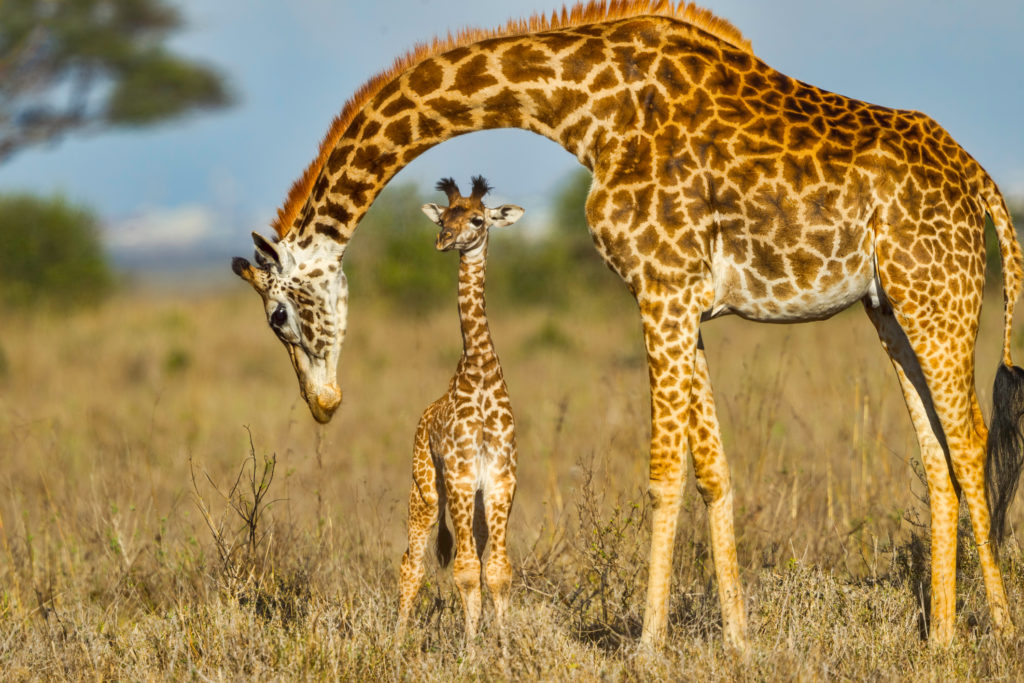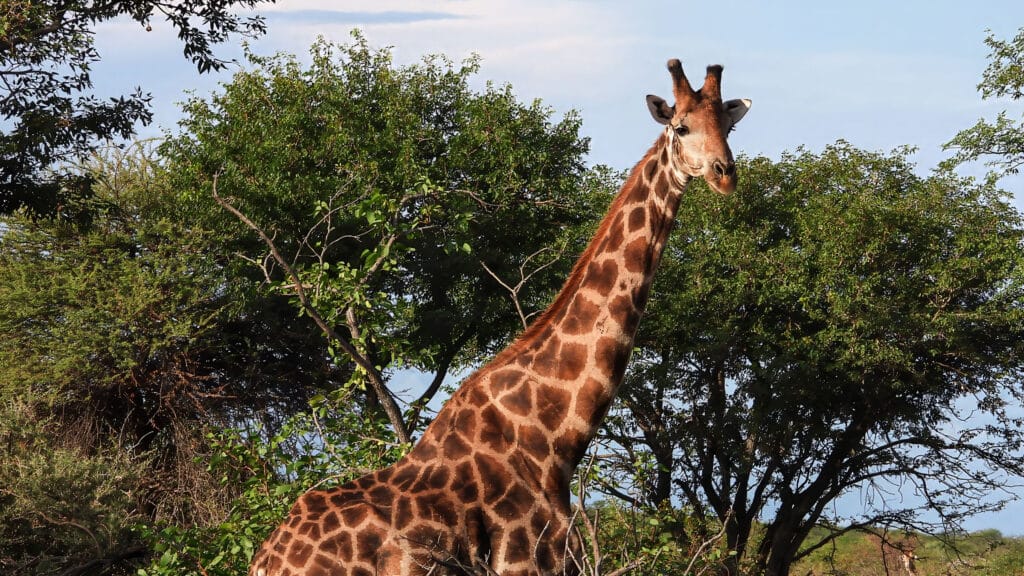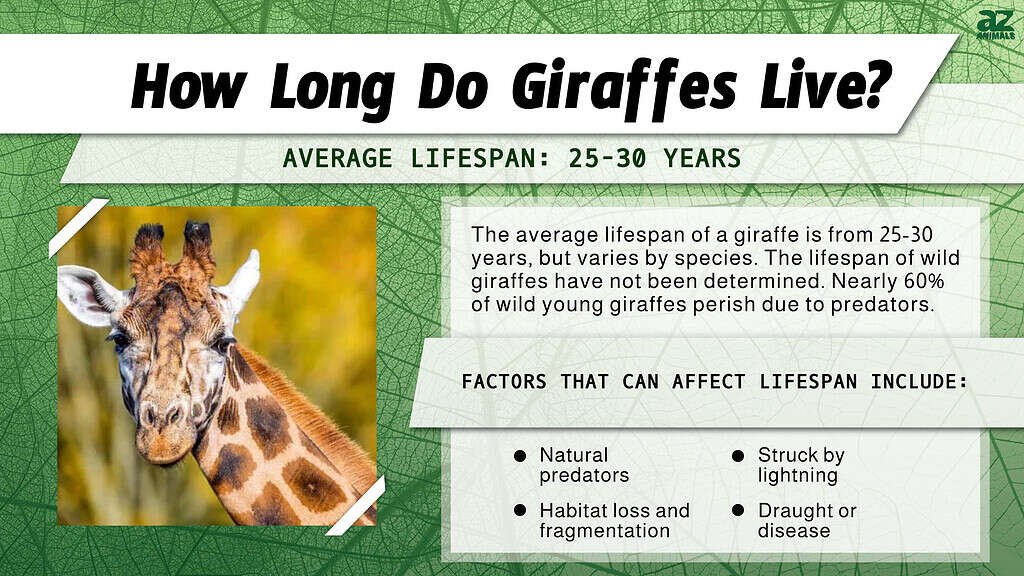The question came to me unexpectedly.
It was a crisp morning in Kenya’s Masai Mara, and the sun was painting the grasslands gold. Our jeep rolled gently over the uneven earth, the hum of the engine blending with the rustle of the wind through tall grass. A pair of giraffes stood in the distance, their necks swaying slowly as they nibbled on acacia leaves.
I leaned forward and asked Joseph, our guide, “How long do giraffes live?”
He smiled knowingly, as though he’d been asked that hundreds of times, yet still found joy in answering. “Ah, my friend,” he said, “these tall ones have their own way of counting time. In the wild, they live a life full of challenges. In protected places, they can live longer. But the real answer is hidden in their journey.”
And so, my fascination began — not just with numbers, but with the life story behind them.
The Tall Giants of the Savannah
Before understanding how long do giraffes live, it’s important to know who they are.
Giraffes are the tallest land animals on Earth, reaching heights of up to 18 feet. Males, known as bulls, are taller and heavier than females, called cows. Calves, even at birth, stand an impressive 6 feet tall and weigh about 100 kilograms.
Their long necks are not only for reaching food — they’re a survival tool. Being able to see predators from far away gives them an advantage, and their strong legs can deliver a deadly kick to a lion if necessary.
Yet, despite these strengths, their lifespan is shaped by a delicate balance between nature’s beauty and its dangers.
How Long Do Giraffes Live in the Wild?
In the wild, giraffes typically live 20 to 25 years.
This number is not fixed; it depends heavily on location, availability of food, water sources, and predator presence. In regions with plentiful vegetation and fewer predators, giraffes may reach the upper end of that range.
Joseph once told me about Naserian, a female giraffe he had observed since she was a calf. She survived multiple lion hunts, drought seasons, and even a brush with poachers. Naserian reached 27 years old — a rare feat for a wild giraffe.
Her story proved something important: while the average tells one truth, individual resilience can rewrite the record.
The Captive Life – Zoos and Giraffe Longevity
When people ask, “Do giraffes live longer in captivity?”, the answer is yes.
In well-maintained zoos and wildlife reserves, giraffes can live up to 28–30 years. This is because they are safe from predators, receive regular veterinary care, and always have access to food and clean water.
I once visited a conservation park in South Africa where a giraffe named Kofi was celebrating his 29th birthday. The keepers prepared a “cake” made of carrots, apples, and lucerne hay. Visitors sang, and children gasped as Kofi gently nibbled at his treat. It was a heartwarming moment — a reminder that human care can extend life, even if it comes at the cost of natural freedom.
The Role of Predators and Nature’s Challenges
Life in the wild is not easy, and it directly affects how long do giraffes live.
Predators like lions, leopards, and hyenas target young giraffes. In fact, nearly half of giraffe calves do not survive their first year. Crocodiles also pose a danger when giraffes come to drink from rivers and lakes.
For adults, predators are less of a threat — unless they are sick or injured. Instead, challenges such as drought, disease, and competition for food take a bigger toll.
A severe drought can weaken a giraffe’s health, reducing its ability to defend itself and lowering life expectancy.

Human Impact on Giraffe Lifespan
Sadly, one of the greatest threats to giraffes is human activity.
Over the past three decades, giraffe populations have dropped by about 40% due to habitat loss, poaching, and climate change. Each of these factors shortens the average lifespan.
When forests are cleared for farming or settlements, giraffes lose their feeding grounds. Poachers, often hunting for meat or hides, not only kill giraffes but disrupt family groups, leaving calves without mothers.
Understanding how long do giraffes live is not just about biology — it’s about how much time we are giving them on this planet.
The Circle of Life – From Birth to Old Age
A giraffe’s life begins dramatically.
Mothers give birth standing up, and calves drop nearly 6 feet to the ground. This jolt helps them take their first breath. Within an hour, most calves can stand and walk — a critical skill to avoid predators.
For the first year, calves stay close to their mothers. They drink milk for about 9–12 months and gradually start eating leaves. By age four or five, they reach maturity.
Old age in giraffes is marked by slower movement, worn teeth, and greater vulnerability to predators. Yet, even in their final years, giraffes remain graceful, walking with the same quiet dignity they’ve had all their lives.
Conservation Efforts and a Brighter Future
The good news is that conservationists are fighting to ensure giraffes live longer, healthier lives.
The Giraffe Conservation Foundation (GCF) and other groups work to protect habitats, monitor giraffe populations, and educate local communities. Anti-poaching patrols have reduced illegal hunting in some regions, while wildlife corridors help giraffes move safely between feeding grounds.
In places where these efforts are strong, the average lifespan of giraffes in the wild has already begun to improve.
Giraffe Stories That Touched the World
Some giraffes have become symbols of hope and resilience.
- April the Giraffe: In 2017, millions of people watched April’s live-streamed birth in New York. Her calf, Tajiri, became a global sensation.
- Twigga: Rescued as an orphan in Kenya, Twigga grew up surrounded by rangers and became known for her playful interactions with visitors.
- Mutangi: The oldest recorded giraffe in captivity, Mutangi lived to be 31 years old in an Australian zoo.
These stories remind us that behind every statistic is a life worth protecting.

Visit our website for more updates and stories
The Final Stretch – What We Can Learn From Their Lives
So, how long do giraffes live? In the wild, usually 20–25 years; in captivity, up to 30.
But their story is more than numbers. Giraffes teach us about resilience, adaptation, and quiet strength. They face predators, environmental changes, and human threats with a calm grace that inspires anyone lucky enough to watch them.
As Joseph told me that day in the Masai Mara:
“It’s not the years that matter most, but how beautifully you walk through them.”













